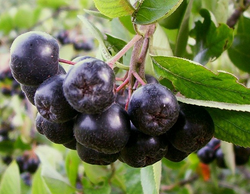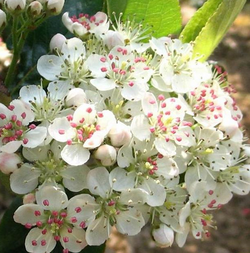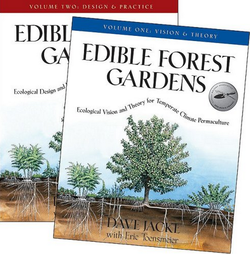 Aronia melanocarpa, Aronia Aronia melanocarpa, Aronia We can think of at least 180 great forest garden & perennial crops for cold climate Sweden. Want to hear about them? Over the course of the next year we will profile 5 a week on the blog. Perennial plants and crops offer a low energy, oil & resource input based foundation for future-proof agricultures. By default if an agriculture is to be called regenerative the bottom line is that it must be soil building, not soil depleting. Relentless deep tillage & poor soil husbandry (wifery?!) contributes to the majority of the 24 billion tons of topsoil lost every year on planet water. We are going to be focused on holistic polyculture grazing and perennial production at ridgedale over most of the site as this represents the most effective way to restore our degraded landscape, produce high value produce and ensure the future resource base we are managing holistically for in our decision making.  Genus Aronia Species melanocarpa Common Name aronia berry Form shrub Habit clumping Origin North America Light sun Moisture wet to mesic Edible fruit Aronia (aka chokeberries) are deciduous shrubs in the family Rosaceae, native to eastern North America and most commonly found in wet woods and swamps. The genus is usually considered to contain two or three species, one of which is naturalized in Europe. Chokeberries are cultivated as ornamental plants and as food products. The berries can be eaten raw off the bush but are more frequently processed. Chokeberries can be found in wine, jam, syrup, juice, soft spreads, tea, salsa, chili starters, extracts, beer, ice cream, gummies and tinctures. The name "chokeberry" comes from the astringency of the fruits, which create a sensation making your mouth pucker. The fruit should be fully ripe before being eaten and is best after a frost or two. It makes a good jelly when sugar is added and is also dried and used for making pemmican. The fruit is rich in pectin and can be added to fruits that are low in this substance when making jams, etc. Pectin is also said to protect the body against radiation. The fruit is generally about 9mm in diameter, some varieties offering better size fruits than others. Aronia melanocarpa (black chokeberry) has attracted scientific interest due to its deep purple, almost black pigmentation that arises from dense contents of polyphenols, especially anthocyanins. Total anthocyanin content in chokeberries is 1480 mg per 100 g of fresh berries, and proanthocyanidin concentration is 664 mg per 100 g. Both values are among the highest measured in plants to date. The plant produces these pigments mainly in the skin of the berries to protect the pulp and seeds from constant exposure to ultraviolet radiation. By absorbing UV rays in the blue-purple spectrum, pigments filter intense sunlight and thereby have a role assuring regeneration of the species. Brightly colorful pigmentation also attracts birds and other animals to consume the fruit and disperse the seeds in their droppings. A test tube measurement of antioxidant strength, the oxygen radical absorbance capacity or ORAC, demonstrates chokeberry with one of the highest values yet recorded—16,062 micromoles of Trolox Eq. per 100 g. ORAC, however, is considered biologically irrelevant to human nutrition. OUR FRIENDS AT PFAF HAVE AN AMAZING DATABASE OF SPECIES (UK BASED);You have today and tomorrow TO SIGN UP TO OUR NEWSLETTER IF YOU WANT TO BE IN TO WIN A FREE COPY OF THE AWESOME EDIBLE FOREST GARDEN MANUAL Sign up to our newsletter for articles/ updates you choose & fortnightly awesome book giveaways... We're going to celebrate 2014 by giving away a copy of Edible Forest Gardens 1 & 2 to thank our subscribers. These books are epic to say the least, make sure you sign up to our customizable newsletter for details... Seasons greetings!
1 Comment
Ron van Wiggen
1/1/2014 08:16:00 pm
Sounds great!
Reply
Leave a Reply. |
Details
Like us on FB Below for regular updatesStay up to date with customized updates you want to receive
Upcoming coursesArchives
December 2016
Categories
All
|

 RSS Feed
RSS Feed